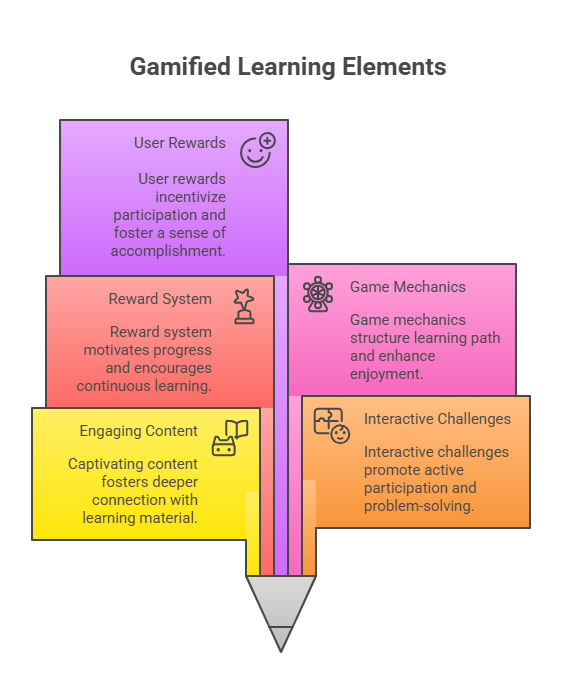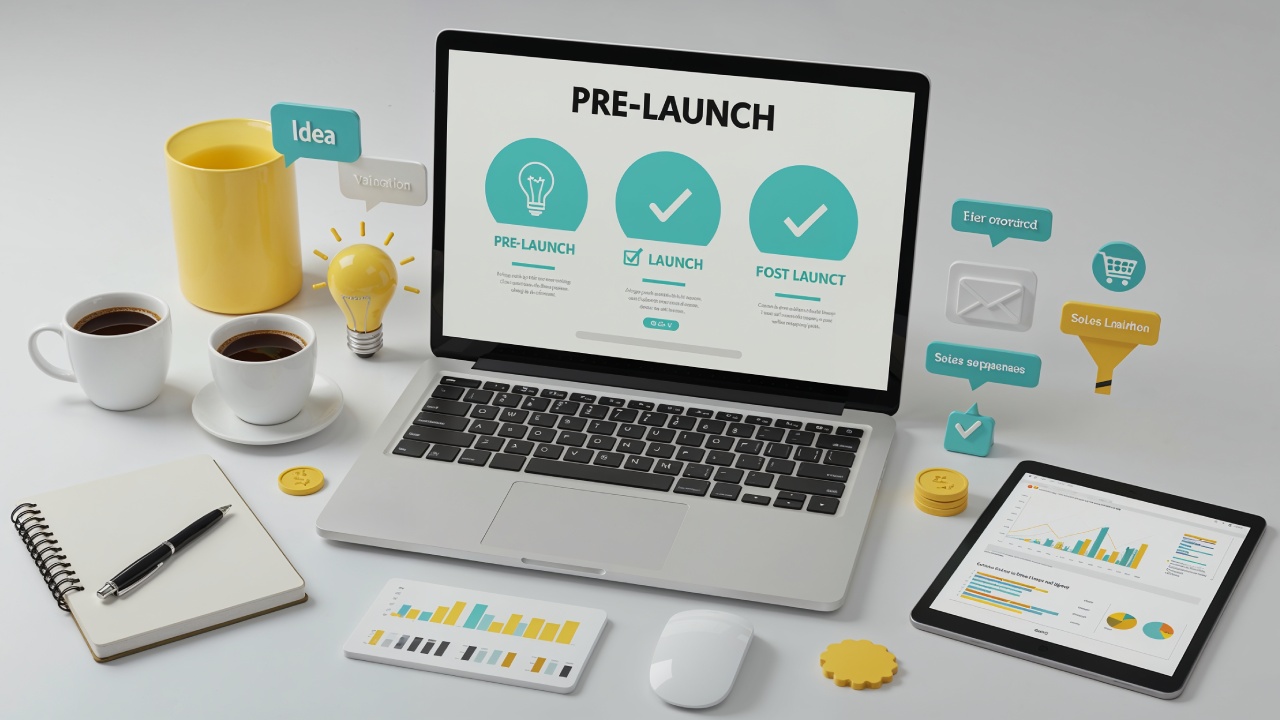Contents
You can transform your learning experiences through the innovative practice of gamification. This approach integrates game-like elements into your information products, making the content not only more engaging but also more effective in retaining your attention. By incorporating challenges, rewards, and interactive components, you enhance your motivation and enjoyment, leading to better outcomes. In this blog post, we will explore how you can leverage gamification strategies to revolutionize the way you learn and interact with educational materials.
Understanding Gamification
As you investigate into gamification, it’s necessary to grasp how it transforms traditional learning experiences into vibrant, interactive journeys. This approach integrates game mechanics into various contexts, encouraging participation and enhancing the overall educational experience. By leveraging elements such as points, rewards, and challenges, you can make learning more appealing and effective.
Definition of Gamification
Behind the term ‘gamification’ lies the concept of applying game design techniques in non-game settings. This involves using elements like competition, achievement, and playfulness to engage learners more actively, making the process of acquiring knowledge not only productive but enjoyable.
Historical Context and Evolution
For a better appreciation of gamification, it helps to explore its historical roots. Initially emerging in the early 2000s, gamification has evolved rapidly alongside advancements in technology. While it initially focused on marketing strategies, you see its shift towards education and training unfolding as organizations recognize the potential to enhance learning retention and motivation through game-like experiences.
At its core, gamification has transitioned from simply rewarding consumers to fostering engaging educational environments. The rise of digital platforms has allowed you to integrate real-time feedback and adaptive learning paths, ensuring that each learning experience is personalized. Over time, educational leaders have embraced this evolution, realizing that incorporating game mechanics can significantly boost learner engagement and understanding. This shift not only enhances the learning process but also empowers you to take control of your educational journeys.
Benefits of Gamification in Info Products
Some of the key benefits of gamification in info products include enhanced engagement, improved knowledge retention, and increased motivation. By incorporating interactive elements, you can turn mundane learning experiences into captivating journeys. Additionally, Making Learning Fun: Gamification in Education has been shown to facilitate a deeper understanding of the material, leading learners to acquire skills more effectively.
Enhanced Engagement
Engagement is central to successful learning. When you introduce gamified elements, such as challenges and rewards, you capture your audience’s attention. This interactive approach connects emotionally with you, making the learning process enjoyable and drawing you into the material.
Improved Knowledge Retention
Engagement extends to how well you retain knowledge after learning. Gamification utilizes game mechanics to present information in a variety of engaging formats, reinforcing concepts and helping you apply what you’ve learned in practical scenarios.
In fact, studies indicate that participants demonstrate a higher degree of recall when information is presented through gamified methods. Unlike traditional learning, which can feel passive and forgettable, gamification encourages active participation and fosters a deeper connection to the content. By participating in challenges, you create mental associations that ease the process of retrieving knowledge when needed.
Key Elements of Gamified Learning
The key elements of gamified learning include engaging content, interactive challenges, and a reward system that motivates you to progress. By incorporating these elements, you can enhance your educational journey and foster a deeper connection with the material. For more insights, check out Using Gamification to Ignite Student Learning.
Game Mechanics
Any effective gamified learning experience incorporates game mechanics such as points, levels, and leaderboards to encourage a sense of achievement. These elements create a structured path that guides you through the content while making the experience enjoyable and competitive.
User Rewards and Incentives
Against traditional educational methods, gamified learning often relies on innovative rewards and incentives to motivate you. These may include badges, access to exclusive content, or recognition on a leaderboard, which serve to encourage ongoing participation and improvement.
This rewarding atmosphere fosters a sense of accomplishment and belonging. By offering meaningful incentives, you stay more engaged and invested in your learning. It’s important to create balanced rewards that ensure you feel motivated without overwhelming pressure, allowing you to focus on growth and mastery of the material.

Effective Strategies for Implementing Gamification
Your success in implementing gamification hinges on well-planned strategies that enhance engagement and retain learner interest. By focusing on key elements such as interactive experiences, feedback, and progress tracking, you can create an immersive environment that keeps learners motivated and encourages continuous improvement. These strategies not only make learning exciting but also reinforce the knowledge gained effectively.
Designing Interactive Experiences
Any effective gamified learning experience should engage users through interactivity. This means integrating game mechanics like challenges, rewards, and competition into your info products. By creating scenarios that require active participation—be it through quizzes, simulations, or storytelling—you foster a dynamic learning atmosphere. When learners are involved, they are more likely to absorb information and apply it practically.
Incorporating Feedback and Progress Tracking
With timely feedback and clear progress tracking, you can enhance the learning experience significantly. Feedback allows learners to understand their strengths and areas for improvement, while progress tracking empowers them to take ownership of their journey. This approach not only boosts motivation but also reinforces their commitment to mastering the material.
Hence, integrating feedback mechanisms and progress tracking tools is important for gamified learning. Providing real-time feedback can help learners adjust their approaches and develop skills more effectively, while clear progress metrics give them a sense of accomplishment. These elements foster a sense of achievement, encouraging participants to engage continuously and pushing them towards their learning goals. The combination of feedback and tracking can create a rich, motivating environment that leads to enhanced outcomes for learners.

Common Challenges and Solutions
Many creators face various challenges when implementing gamification in info products, such as resistance to change and ensuring accessibility for all learners. Identifying these challenges early allows you to develop effective strategies that not only enhance user engagement but also improve the overall learning experience.
Overcoming Resistance to Change
Behind the scenes, user resistance often stems from a lack of understanding or fear of the unknown. To combat this, you should first introduce gamification concepts gradually, ensuring your audience sees the value it brings. Providing clear benefits and engaging demos can help alleviate concerns and encourage adoption.
Ensuring Accessibility
Ensuring accessible content is necessary for engaging all learners effectively. You must consider diverse user needs and create materials that are easy to comprehend and navigate.
In fact, making your info products accessible not only broadens your audience but also promotes a positive learning experience. Incorporating features like screen reader compatibility, clear navigation, and high contrast visuals can significantly enhance usability. You should also offer alternative formats, such as audio versions or text transcripts, to cater to various learning preferences. Ultimately, fostering an inclusive approach will help you maximize engagement and ensure everyone benefits from your gamified content.
Case Studies and Success Stories
Despite initial skepticism, many organizations have successfully implemented gamification in their info products, yielding impressive results. Here are some notable case studies:
- Khan Academy: Increased user engagement by 50% through leveling up and badges for accomplishments.
- Duolingo: Achieved 30 million active users with a fun and interactive learning system that incorporates leaderboards.
- Salesforce: Enhanced team performance by 30% using game-based training simulations, resulting in better sales outcomes.
- Fitbit: Explored health habits in their users, leading to a 20% increase in goal achievement through social challenges.
Examples from Various Industries
An array of industries has adopted gamification strategies to enhance learning and retention. Education, health, and corporate training sectors are just a few examples where game mechanics have transformed traditional approaches into engaging experiences.
Impact on Learning Outcomes
Along with improving engagement, gamification positively affects learning outcomes. Various studies indicate that users who participate in gamified experiences retain more information and develop better problem-solving skills.
It’s important to note that implementing gamification effectively can lead to significant improvements in your organization. Research shows that learners exposed to game-like environments saw a 40% improvement in retention rates and a 20% increase in motivation levels. Furthermore, integrating immediate feedback helps learners adjust their strategies, reinforcing their understanding. By leveraging these positive elements of gamification, you can create an engaging learning environment that promotes both personal growth and organizational success.
Final Words
Hence, as you explore the integration of gamification into your info products, you open a pathway to making learning engaging and enjoyable. By incorporating game elements, you can enhance motivation and retention for your audience. Embrace this innovative approach and transform your educational content into an interactive experience. For more on how to effectively implement this strategy, check out this resource to Make Learning Fun with Gamification in Education.








